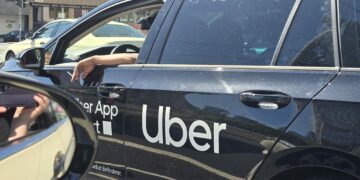Uber, bombarded with bad press, has stopped digging in its heels about certain high-profile issues. After a series of bad press involving everything from flouting local regulations, to getting caught using technology to avoid regulators, to multiple female employees coming forward with stories of hostile work environments, Uber is trying to change.
Following last week’s explosive New York Times report about the company’s use of a program called “Greyball” to identify law enforcement officials who used the Uber app to catch drivers in cities that barred the service by showing authorities a fake version of the app that makes it impossible to hail a car, Uber announced last Wednesday that it will no longer Greyball riders because it identifies them as regulators.
“We have started a review of the different ways this technology has been used to date,” chief security officer Joe Sullivan said in a blog post. “In addition, we are expressly prohibiting its use to target action by local regulators going forward.”
Uber admitted to using Greyball in the Times story, explaining that it was meant to prevent competitors “looking to disrupt our operations” (something Uber itself has been accused of doing to its competitors) and “opponents who collude with officials on secret ‘stings’ meant to entrap drivers.” The company is also trying to get back in the state of California’s good graces by following its rules regarding self-driving cars and obtaining the proper permits for those cars. Late last year, Uber attempted to put self-driving cars on San Francisco’s roads as part of its UberX service. But it ran into problems almost immediately when the California Department of Motor Vehicles said the cars would have to get permits for the self-driving cars just like all the other companies’ self-driving cars had.
Uber resisted, saying the cars weren’t really self-driving because they had to have an engineer behind the wheel ready to take over if anything went wrong. California didn’t buy that, and pulled the car’s registrations. Uber is now picking up passengers with its self-driving cars in Arizona.
There was also some controversy over Uber’s self-driving trucks and if they are autonomous enough to require a self-driving permit (which, being trucks, California law does not allow). The DMV told Vocativ it was looking into this.
But Uber is now singing a different tune. It has obtained two permits to operate self-driving cars in California. Those cars will not be picking up passengers, the Associated Press said. As conditions of those permits, Uber will now be required to pay a small fee and report crashes or times when a human had to take control of the car — something the company that is notoriously reluctant to share any kind of data with anyone would have preferred to avoid. But with co-founder and CEO Travis Kalanick saying “I need leadership help and I intend to get it” following the release of a video of him arguing with an Uber Black driver (and another round of bad press) — and reports that the company is actively looking for a chief operating officer to fill that role — it might be worth letting go of a little bit of information if it helps get back into the public’s good graces. wf









